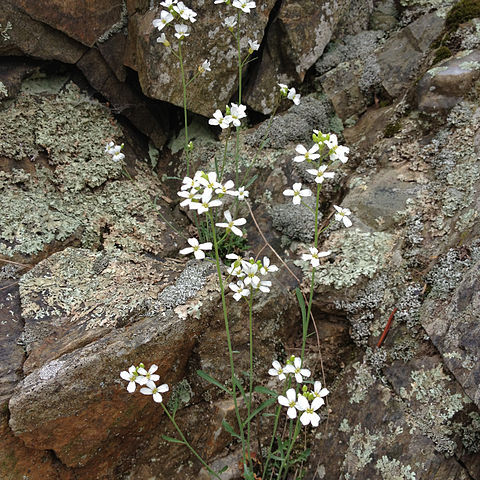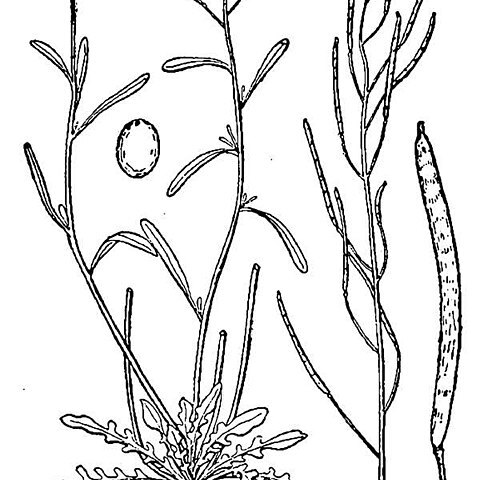Biennials or perennials; (caudex branched or not, sometimes root crown present); glabrous or pubescent, trichomes simple, with stellate, forked, and rayed ones. Stems simple or few to several from base, erect or decumbent, usually branched distally, 0.5-5 dm, pubescent basally, trichomes mixed simple, 1-forked, and (fewer) stellate ones, rarely 3-rayed, glabrous or pubescent apically. Basal leaves: petiole 0.5-6 cm; blade oblanceolate or ovate, 0.5-8.5 cm × 2-18 mm, margins entire, dentate, or lyrate-pinnatifid (when lobed, terminal lobes larger than lateral), apex obtuse, surfaces glabrous or sparsely to densely pubescent. Cauline leaves shortly petiolate or sessile; blade oblanceolate, 0.4-4.2 cm × 1-8(-10) mm (smaller distally), margins usually entire, repand, or obscurely toothed, rarely lobed. Fruiting pedicels divaricate or ascending, 2-15 mm. Flowers: sepals 2-4.5 mm, lateral pair saccate basally, (glabrous or densely pubescent); petals white or purplish, spatulate or obovate, 4-10 × 1.5-4 mm, (claw to 2 mm, toothless); filaments 2-4 mm. Fruits torulose, flattened, (1.5-)2-4.5 cm × 0.8-1.8 mm; valves each with distinct midvein; ovules 24-46 per ovary; style 0-1 mm. Seeds light brown, (flattened), oblong, 0.8-1.4 mm; cotyledons accumbent.
More
A cabbage family herb. It can grow over 2 years or keep growing for a few years. It forms tufts. It grows 25 cm tall. The stems are slender and often branched. The leaves on the stems are alternate and scattered. They are narrow and taper at the base. There can be teeth along the edge. The leaves near the base are lobed and 4 cm long. They form rings. The flowers are small and in clusters in the axils of leaves or at the ends of branches. The flowers have 4 white petals in the shape of a cross. The fruit are long slender pods with seeds.
Cliffs, ledges, thickets, stream and river banks, woods, limestone crevices and bluffs, sandstone hills and outcrops, serpentine rocks and barrens, shale, talus, sand dunes; at elevations up to 1,000 metres.
More
It is a cold temperate plant. It grows on ledges, cliffs and in gravel and sand.


